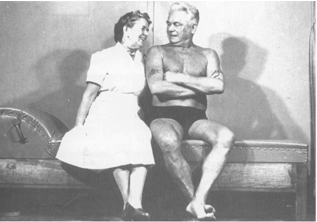Pilates History
Pilates is named after its creator Joseph Pilates, a remarkable German-American individual.
Joseph Pilates was a sickly child, suffering from rickets, asthma and rheumatic fever, but sought to regain his health through exercise and nutrition. He began studying bodybuilding and gymnastics, and, by the age of 14, was fit enough to pose for anatomical charts.
In 1912, Joseph moved to England where he boxed professionally, taught self-defence to the Scotland Yard detectives and performed with the circus. He also studied a wide range of philosophies from yoga, zen and martial arts to ancient Greek and Roman disciplines.
Two years after World War 1 broke out, Pilates was sent with other Germans to a prison of war camp on the Isle of Man. Pilates became an intern at the camp and trained other internees in physical fitness exercises that he developed. He was widely credited when none of the inmates succumbed to an influenza epidemic that killed thousands.
In 1926, Joseph immigrated to the United States by ship, where he met his wife Clara, a trained nurse. The couple founded their studio in New York, where Joseph continued to expand on his exercise system and further develop and produce his various pieces of equipment.
Joseph and his method, which he and Clara called Contrology, soon established a following in the dance and performing arts community. Joseph believed in gradually acquiring control of your body and then, through proper repetition of exercises, developing a rhythm of movement in harmony with your subconscious.
Integrating the complete coordination of the mind, body and spirit, Contrology is the foundation for the Pilates Method of Body Conditioning. Today, more and more people are joining athletes, fitness professionals and dancers in practising Pilates as they discover its many benefits to fitness, posture and consciousness.

